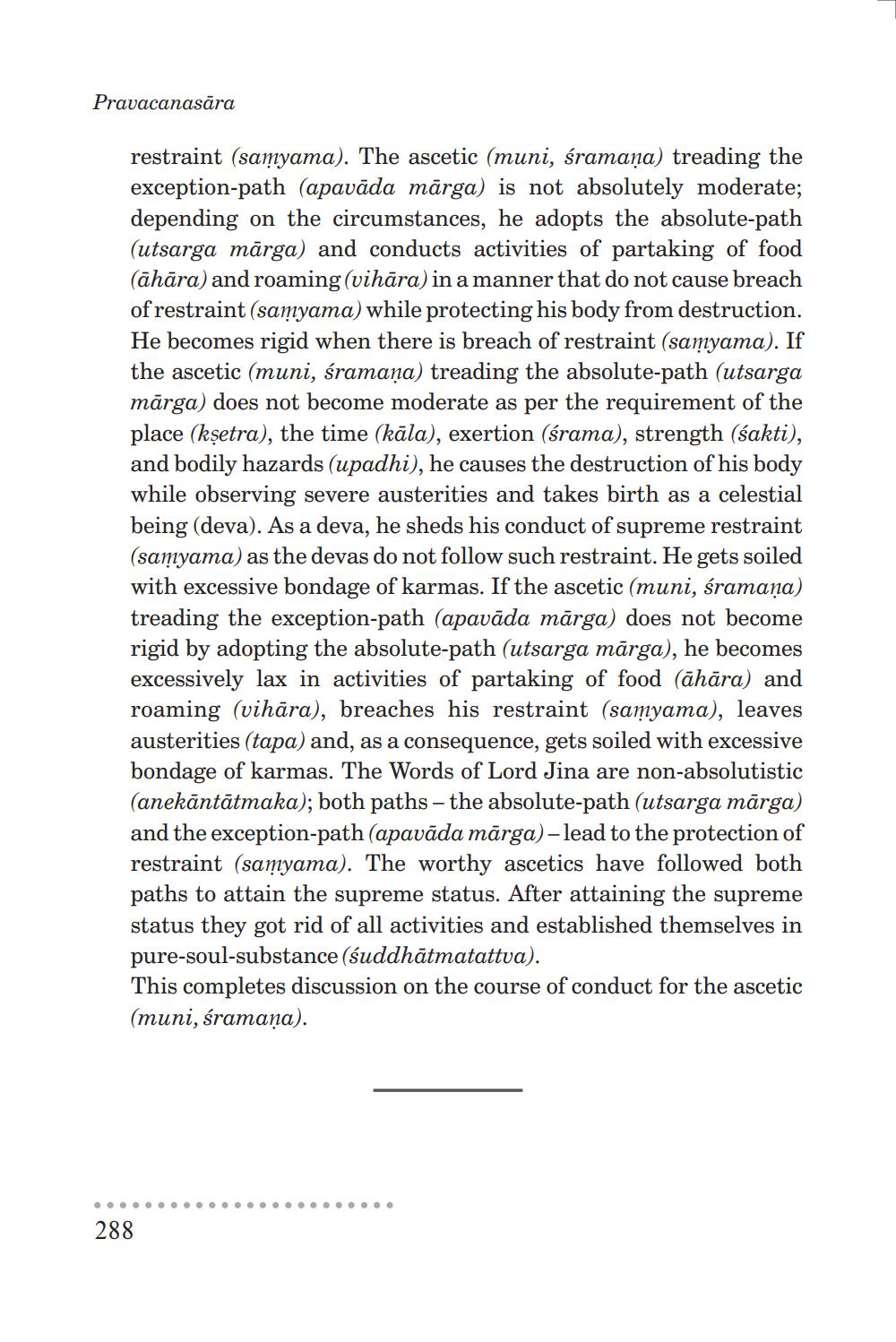________________
Pravacanasāra
restraint (samyama). The ascetic (muni, sramana) treading the exception-path (apavāda mārga) is not absolutely moderate; depending on the circumstances, he adopts the absolute-path (utsarga mārga) and conducts activities of partaking of food (āhāra) and roaming (vihāra) in a manner that do not cause breach of restraint (samyama) while protecting his body from destruction. He becomes rigid when there is breach of restraint (samyama). If the ascetic (muni, śramaņa) treading the absolute-path (utsarga mārga) does not become moderate as per the requirement of the place (kşetra), the time (kāla), exertion (śrama), strength (sakti), and bodily hazards (upadhi), he causes the destruction of his body while observing severe austerities and takes birth as a celestial being (deva). As a deva, he sheds his conduct of supreme restraint (samyama) as the devas do not follow such restraint. He gets soiled with excessive bondage of karmas. If the ascetic (muni, śramaņa) treading the exception-path (apavāda mārga) does not become rigid by adopting the absolute-path (utsarga mārga), he becomes excessively lax in activities of partaking of food (āhāra) and roaming (vihāra), breaches his restraint (samyama), leaves austerities (tapa) and, as a consequence, gets soiled with excessive bondage of karmas. The Words of Lord Jina are non-absolutistic (anekāntātmaka); both paths - the absolute-path (utsarga mārga) and the exception-path (apavāda mārga) – lead to the protection of restraint (samyama). The worthy ascetics have followed both paths to attain the supreme status. After attaining the supreme status they got rid of all activities and established themselves in pure-soul-substance (śuddhātmatattva). This completes discussion on the course of conduct for the ascetic (muni, śramaņa).
........................ 288




